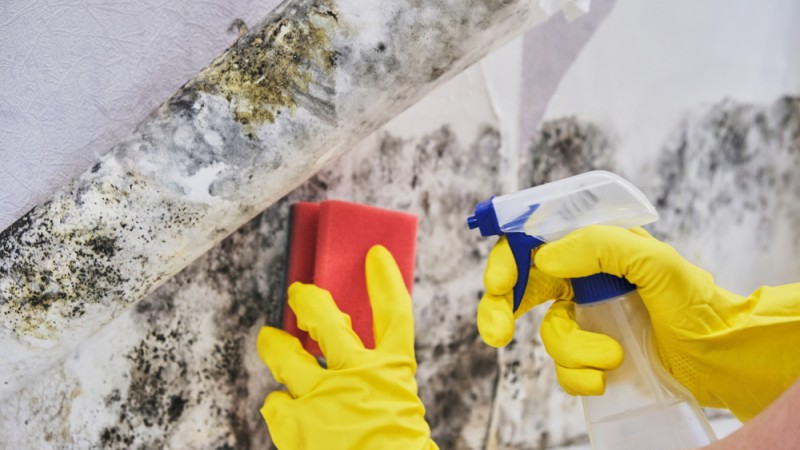| Day | Opening Hours |
|---|---|
| Monday | 8:30am - 6pm |
| Tuesday | 8:30am - 6pm |
| Wednesday | 8:30am - 6pm |
| Thursday | 8:30am - 6pm |
| Friday | 8:30am - 6pm |
| Saturday | 9:00am - 3pm |

We are sure many of you will have, over the last few days read or heard about the tragic death of 2-year-old boy, Awaab Ishak, who died in 2020 after prolonged exposure to mould whilst living in social housing.
Damp can occur in any home, from a studio flat to a mansion. This is why knowing how to stop condensation on walls and ceilings is important for all. This is often caused by failing to keep up with house maintenance. Clothes and furniture can be damaged and it can also trigger health problems like asthma. That's why, if you do see signs of damp, it's best to get to the bottom of the problem as soon as possible.
How to stop condensation on walls and ceilings As with everything prevention is easier than working out how to get rid of damp. 'Once damp starts, it can sometimes be difficult to remedy the issues it causes, such as mould growth and structural damage.' Prevention is always easier than the cure - which is pretty literal when it comes to mould, considering the health risks that can come along with it!' Here are a few quick and simple remedies for how to stop condensation on walls and ceilings.
Condensation caused damp
The most common form of damp is often caused by poor heating and ventilation. It occurs when activities such as cooking raise the level of humidity in a building. This air condenses on cold surfaces, such as windows and walls.
Running water on windows is the most obvious signal of condensation and can lead to stained curtains, decaying window frames or moulding on paint and wallpaper.
Rising damp
This is where water enters a structure from the ground. Symptoms include decayed skirting boards and floors, stained plaster, and peeling paint and wallpaper.
Penetrating damp
This is when water enters a building from outside and moves through the walls, often creating stains or mould growth at some distance from the leak. Caused are defects in guttering and pipes, faulty flashings, poor pointing and cracked rendering.
How to get rid of condensation on windows
Wipe down windows and sills every morning, remove the condensation as soon as you see it as this will stop any mould from building up. Use kitchen towel or a squeegee that might help to wipe down walls and window frames with a fungicidal wash.
If you're removing mould caused by condensation, we recommend that you wipe it away with a cloth dipped in soapy water. When you're done, use a dry cloth to remove any moisture, and throw both cloths away. Be careful not to brush the mould, as this can release mould spores.
Deal with steam from cooking
Always cover pans and pots when cooking. You could also close the kitchen door when cooking to stop steam escaping to other parts of the house. Improving your heating and ventilation systems will do a long way to solving condensation issues. Use a extractor fan if provided to reduce moisture.
Get rid of bathroom moisture
Showering or bathing can produce lots of steam and moisture. When looking for how to stop condensation on walls and ceilings in the rest of the house be sure to keep the door of the bathroom closed and open your bathroom window when showering. Use a bathroom extractor fan if fitted to help clear the excess moisture in the room. This is even more important if you don't have a window in the bathroom. If the fan in the bathroom is not working i.e. there is no air coming from it then please let your landlord or agent know.
Ensure ventilation
Ventilating your home can be as easy as opening a window for at least 15 minutes each morning. If you have windows that can be locked in a slightly open position, all the better.
Keep your house warm
To keep the damp at bay during the colder months, try to keep your home at a steady warm temperature. Damp happens when warm air hits cold walls, so by keeping your house warm the surfaces don't get cold enough to create condensation.
Buy a Dehumidifier
Contents in a home left empty for long periods can easily be damaged if they absorb and hold excess moisture from the air. The same applies to properties that feel permanently damp, due to their location, (perhaps built against the side of a hill) or age. It will reduce the level of humidity in the air, by sucking in air from the room at one end, removing the moisture, and then blowing it back out into the room again, adding warmth in the process.
Do Not Hang Clothes to Dry Inside
Most important one is drying clothes inside, try hanging clothes outside to dry - even in winter. This will help with how to stop condensation on walls and ceilings in the house. If you have space see about investing in a tumble dryer which will help contain the steam and moisture when drying clothes. If you do have to leave clothes to dry inside, position a dehumidifier nearby to suck up the excess moisture.
Placing furniture up against walls
If furniture is placed close to external walls in your home, the conditions are perfect for condensation to form. Air trapped behind the furniture will cool when it comes into contact with the surface of the wall and release its moisture. Try to leave space between the wall and furniture to allow the external wall to breath.
Finally, if you see any signs of damp or mould please contact your agent or landlord immediately.